Senior Analyst Mike Renner returns with his “Teaching Tape” series, a weekly feature in which he explains how and why the best in the NFL are successful at what they do. Renner’s second Teaching Tape article of the 2017 offseason dives into the scramble drill often utilized by quarterback Aaron Rodgers and the Green Bay Packers' offense.
Over the years, we’ve seen quarterbacks in the NFL that are faster. We’ve seen quarterbacks in the NFL that are more elusive. What we have never seen, though, is a quarterback give opposing defensive coordinators more headaches outside the pocket than one Aaron Rodgers.
This should come as no surprise. Rodgers' game has evolved over the years into a one-man offensive machine, and his ability outside the pocket is unquestionably the most feared around in the league. When it comes to making plays outside the framework of an offense, it’s like the Packers' quarterback is playing a different game than everyone else. Below are some of Rodgers’ passing statistics on scrambles — all of which he leads the league in — along with the next-closest quarterback’s marks.
| On Scrambles | Aaron Rodgers | Next-closest QB | NFL average |
| Completions | 38 | 30 (Matthew Stafford) | 14.8 |
| Attempts | 88 | 64 (Russell Wilson) | 39 |
| Yards | 543 | 429 (Matthew Stafford) | 196.8 |
| Touchdowns | 10 | 4 (Matthew Stafford) | 1.5 |
Those stats are eye-opening, and they don’t even take into account the fact that he finished with the second-most rushing yards on scrambles of any quarterback (374), trailing Buffalo's Tyrod Taylor by a mere 34 yards. Rodgers doubled the league average in every single passing category, and when it comes to scrambling ability in the red zone, no one is even close. It’s no wonder Rodgers threw an NFL-high 24 of his 40 touchdowns from inside the 10-yard line.
For Green Bay, this is more than Rodgers simply reacting to collapsing pockets — it’s a core tenet built into the offense. Right tackle Bryan Bulaga has gone so far as to say that Rodgers will tell his offensive tackles to overset at times to bait edge rushers into inside moves and blow their contain. These are such important plays that they get practiced like anything else. Receivers drill the best angles to take to open space after they’ve seen that a play has broken down. The 917 yards Rodgers gained via run and pass on scrambles last year will get attributed to him on the stat sheet, but it’s an entire team effort to get to that figure. And that’s what makes the Green Bay Packers the “Teaching Tape” team for the scramble drill.
As cliché as it is to say, it all starts up front for the Packers. Without one of the best pass-protecting offensive line’s in the NFL, none of this is possible. The front five of left tackle David Bakhtiari, left guard Lane Taylor, centers J.C. Tretter and Corey Linsley, right guard T.J. Lang, and right tackle Bryan Bulaga combined to lead the entire NFL in pass-blocking efficiency last season. Four of those six players finished among the top five in pass-blocking efficiency at their respective positions (Taylor and Tretter withstanding). Scrambling doesn’t work without time, space in the pocket, and a lack of free runners on the quarterback.
With the superb continuity over the past handful of seasons on Green Bay’s line, the Packers have built a symbiotic relationship with their All-Pro quarterback. As I mentioned in the opening, defensive coordinators game plan to keep Rodgers in the pocket more than any other quarterback. The best way to do this without compromising the integrity of the pass defense with a spy is to enforce strict gap control on those rushing the passer. As you can see below, in a standard five-man protection, there are six possible gaps between offensive linemen in which Rodgers could reasonably slither through.
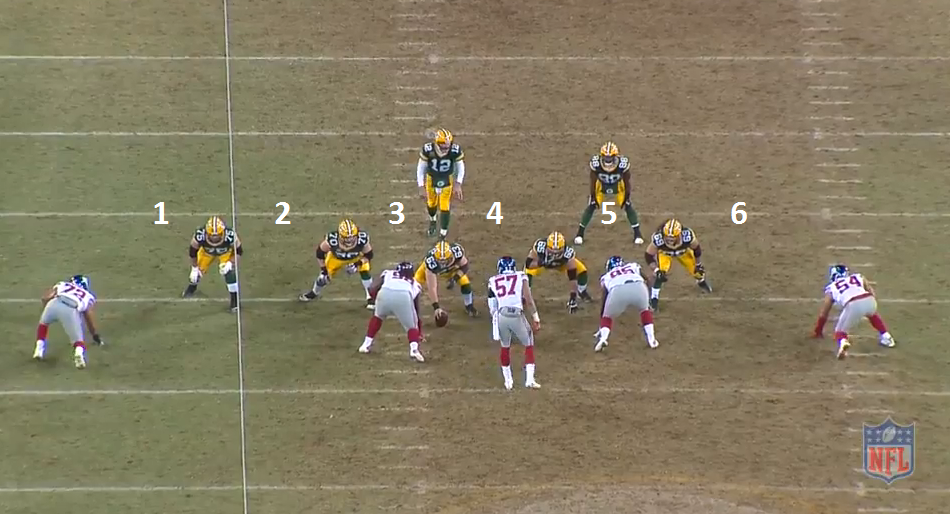
In a standard four-man rush, that leaves two gaps unaccounted for. The most common way teams deal with that numbers disadvantage is to two-gap their edge rushers. This will usually come via the bull rush, but teams have gone so far as to mush-rush their ends, meaning they don’t even attempt to attack the quarterback to keep contain.
The Packers' tackles know this will be the case with most teams, though, and use that to their advantage. No set of tackles latches on to their blocks in the NFL better than Bakhtiari and Bulaga. For this reason, opposing fan bases scream bloody murder for holding calls every game against the Packers — even though they shouldn’t be called — and almost every team that tries to sacrifice pass rush for contain against Green Bay seems to still get burned.
Talking with Colts defensive lineman Henry Anderson at the start of training camp a season ago, I asked him the biggest difference between pass-rushing in college versus the NFL. He told me that, in college, offensive linemen punch; in the NFL, linemen grab. The Packers embody that mantra. They not only want to negate pressures, but they also want to eliminate any separation between themselves and the defender. If the defender can’t keep his body clean, he has little chance of tracking down Rodgers.
In the freeze frames above, you can see what I’m talking about. The tackles aren’t “punching” per se, they’re engulfing. Their arms are wide, unafraid of the bull rush because they know once that happens, they’ll latch on and Rodgers can leak out the back door.
When he does leak out the back door, the magic begins — and this is the part of the Teaching Tape that one can’t actually teach. Sure, there are some elements of scrambling that can be coached to a degree. Rodgers' first move away from pressure is almost always up in the pocket, the correct way to help your offensive linemen maintain leverage. He’ll only drift backwards and break the pocket as a last resort. When he is on the move, he won’t throw the ball back late across his body to the middle of the field — a cardinal sin of quarterback as told by Rodgers himself.
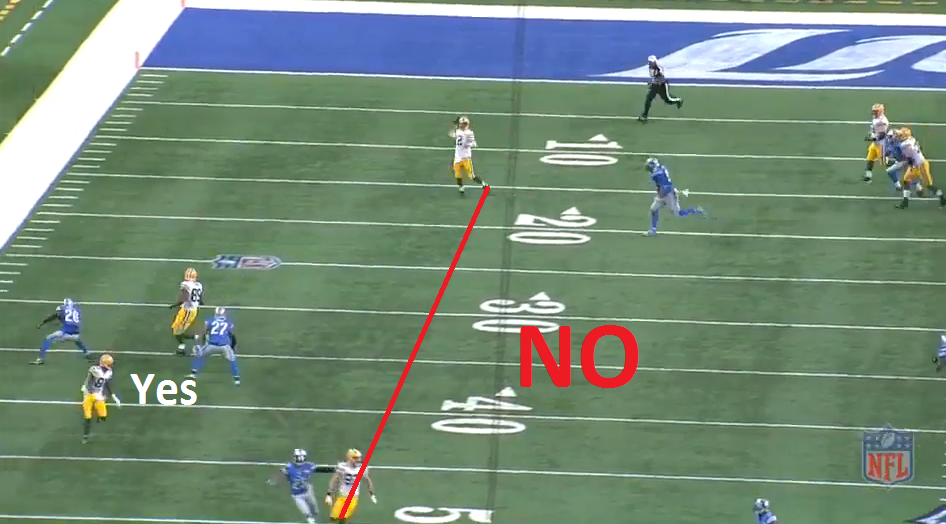
There are rules and habits that he follows that keep him consistent, but good luck teaching someone to throw like this:
I forgot how stupid this throw was pic.twitter.com/E51SfR4PnK
— Mike Renner (@PFF_Mike) May 24, 2017
Or this:
No clue how he got out of this pic.twitter.com/an2JF8pbbf
— Mike Renner (@PFF_Mike) May 24, 2017
This is one of the first times in the Teaching Tape series where I’m not sure I’m even highlighting a positive. At times over the past two seasons, Rodgers has become far too reliant on broken plays, and this boom-or-bust nature (43.2 completion percentage this past year) has led to lulls in the Green Bay offense. Still, there is no one more proficient and prolific at the broken play than the Packers, and if they’re coming up on your team's schedule, it’s something you have to prepare for.
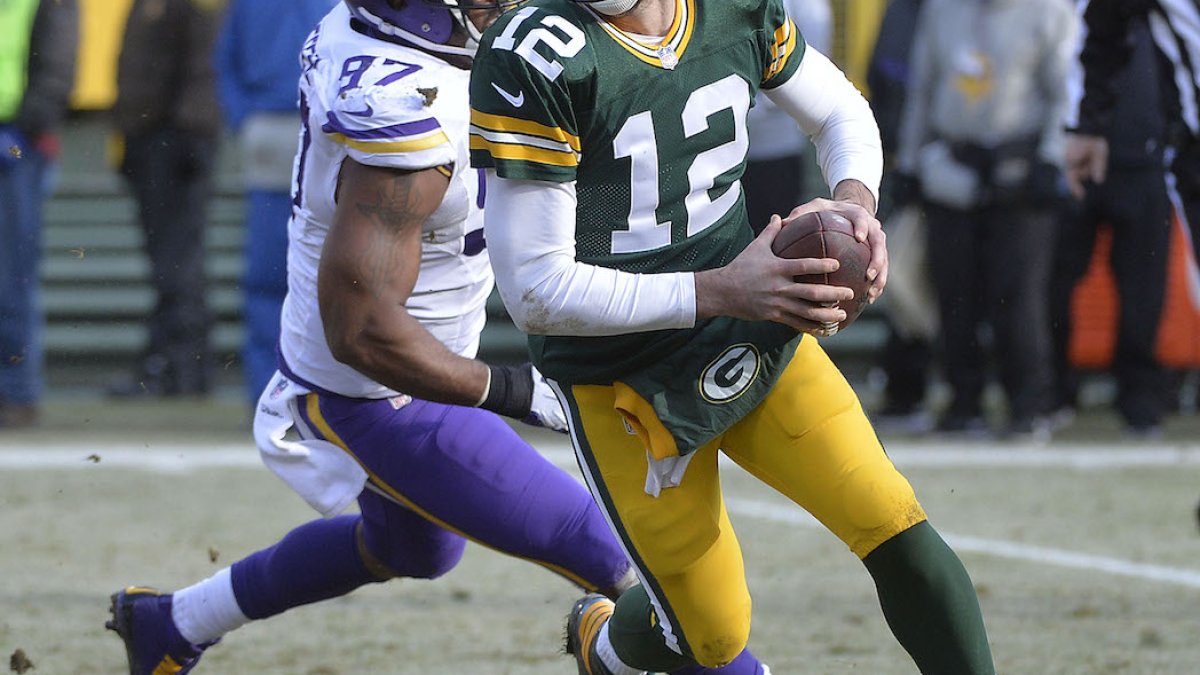
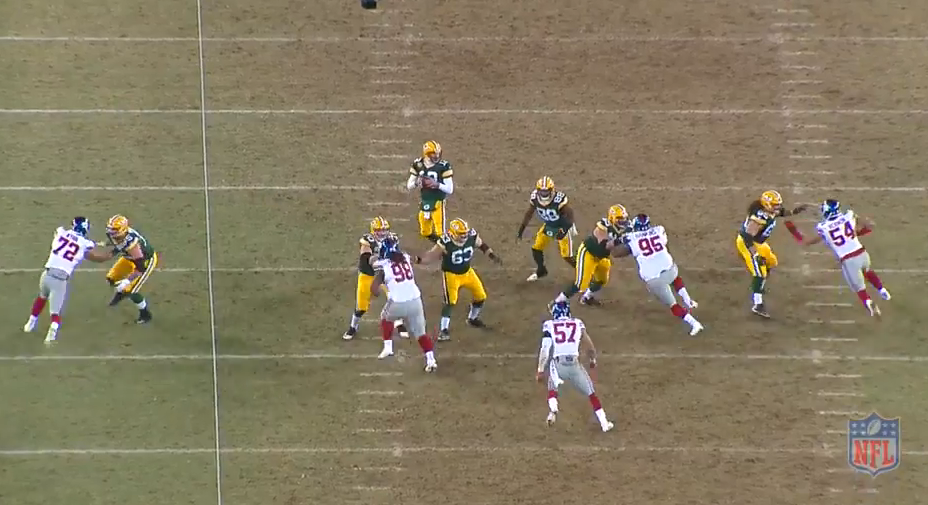
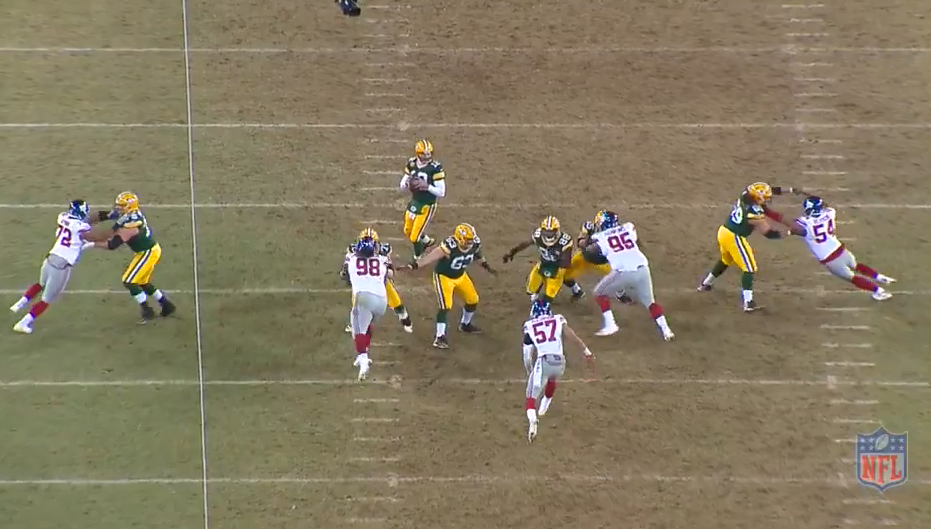


 © 2024 PFF - all rights reserved.
© 2024 PFF - all rights reserved.